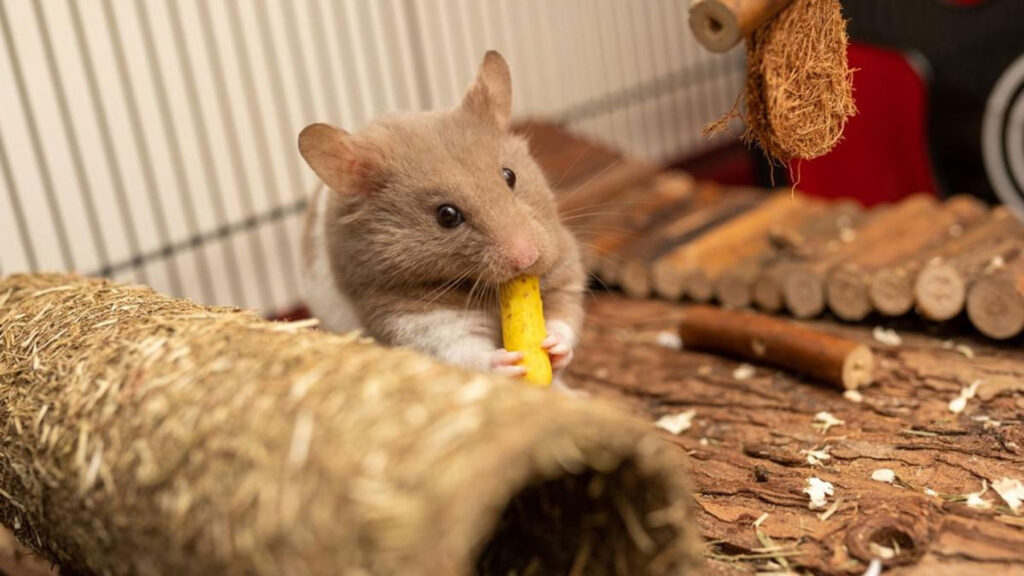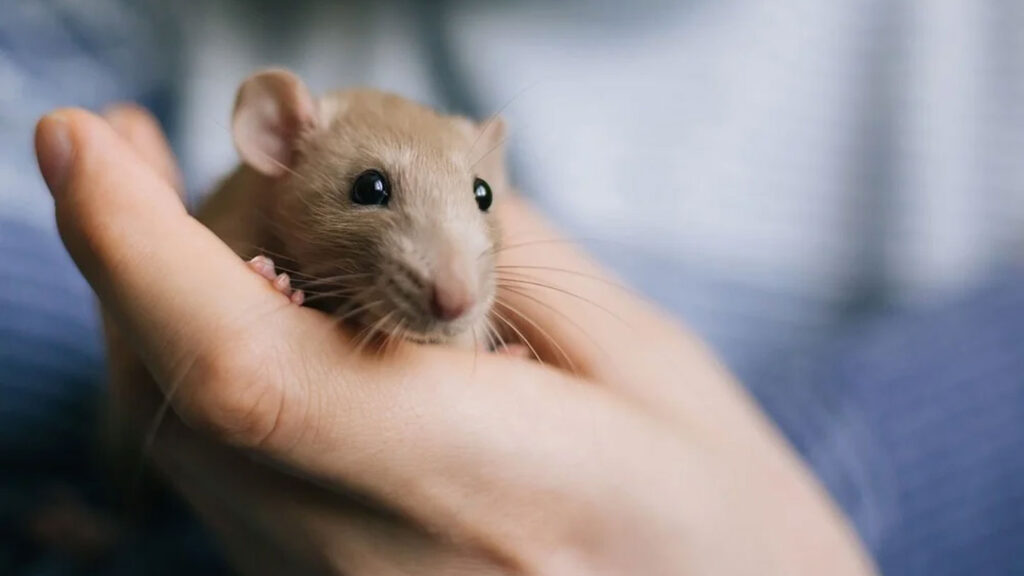Caring for pet rats can be a rewarding experience. This comprehensive guide covers everything from choosing the right rat to providing proper care and nutrition.
Whether you’re a new rat owner or looking to improve your knowledge, this guide has you covered. Find out how to create a safe and comfortable environment, establish a healthy diet, and handle rats with care. With useful tips and practical advice, you’ll be equipped to provide the best care for your furry friends.
Get ready to embark on a journey of rat care and create a loving and happy home for your pet rats.
1. Rats As Pets: The Ultimate Companion
Rats as Pets: The Ultimate Companion
Rats make great pets for many reasons. Firstly, they are highly intelligent and can be easily trained. They are also very social animals and enjoy human interaction, making them excellent companions. Additionally, rats are low-maintenance pets that require minimal grooming and are generally clean animals. They are also small in size, making them suitable for people with limited living space.
The Benefits of Owning Rats as Pets
Owning rats as pets can bring numerous benefits. Firstly, rats are known to have a calming effect and provide emotional support to their owners. They can help lower stress levels and reduce feelings of loneliness. Rats are also highly interactive pets and love to play, making them entertaining companions. Furthermore, rats have a relatively long lifespan, typically living for 2-3 years, allowing for a longer-lasting bond with their owners.
Rat Breeds Suitable for Pet Ownership
| Breed | Description |
|---|---|
| Hooded Rat | A popular breed with a distinctive black or brown hood on its head. |
| Dumbo Rat | Distinguished by its large, round ears and gentle temperament. |
| Rex Rat | Known for its curly or wavy fur and playful personality. |
These are just a few examples of rat breeds that are suitable for pet ownership. Each breed has its own unique traits, allowing pet owners to choose a rat that best suits their preferences and lifestyle.
2. Preparing For Your New Rat A Step-By-Step Guide
Choosing the right cage for your rat:
| Size: | Ensure the cage is spacious enough for your rat to move around comfortably. |
| Material: | Opt for a cage made of wire or metal bars to provide adequate ventilation. |
| Accessibility: | Look for a cage with multiple access points such as doors or openings for easy cleaning and handling. |
Essential supplies for rat care:
- Bedding: Use bedding material that is safe and comfortable for your rat, such as shredded paper or aspen shavings.
- Food and water containers: Provide dishes that are easy to clean and refill for your rat’s meals and hydration.
- Toys and hiding spots: Keep your rat entertained with toys, tunnels, and hideouts to stimulate their curiosity and provide enrichment.
- Chew toys: Rats have a natural instinct to chew, so provide them with appropriate chew toys to satisfy their need and prevent dental issues.
Rat-proofing your home:
- Secure wires and cables to prevent chewing hazards.
- Seal off small openings where rats can escape or get stuck.
- Remove toxic plants and substances that may harm your rat if ingested.
- Elevate valuable or fragile items to prevent accidental damage.

3. Feeding And Nutrition Keeping Your Rats Healthy
|
Rat dietary needs and preferences Feeding your pet rats a well-balanced diet is crucial for their overall health and well-being. Rats are omnivorous, which means they require a combination of plant-based and animal-based foods to meet their nutritional needs. A good base diet for rats consists of a high-quality commercial rat pellet, which provides essential vitamins and minerals. Additionally, you can offer fresh fruits, vegetables, and grains as supplements. It’s important to avoid feeding your rats foods that are toxic to them, such as chocolate, caffeine, and certain fruits and vegetables. |
|
Types of food to feed your rats When it comes to feeding your pet rats, variety is key. Offering a diverse range of foods ensures that they receive all the necessary nutrients. You can provide your rats with a mix of fresh fruits and vegetables, including apples, carrots, spinach, and broccoli. Cooked grains, such as rice and pasta, can also be added to their diet. Animal-based protein sources like cooked chicken or boiled eggs are important for their muscle development. Additionally, you can offer treats like nuts or seeds in moderation. |
|
Common nutrition-related health issues in rats Proper nutrition plays a vital role in preventing and managing common health issues in rats. Vitamin and mineral deficiencies can lead to problems like poor growth, weakened immune system, and dental issues. On the other hand, overfeeding and improper diet composition can result in obesity and associated health problems. It’s important to monitor your rats’ food intake and provide a balanced diet to prevent these issues. If you notice any signs of nutritional imbalance or health concerns, consult a veterinarian who specializes in small animals. |
4. Creating A Comfortable Environment For Your Rats
Creating a comfortable environment is essential for the well-being of your pet rats. It’s important to provide enrichment for rats to prevent boredom and promote their natural behaviours. Understanding rat behaviour and natural instincts will help you create a habitat that meets their needs.
Rats are highly intelligent and curious creatures. They love to explore, climb, and chew. Provide plenty of toys, tunnels, and climbing structures to keep them active and engaged. Avoid using materials that are harmful or easily destroyed. Opt for safe and durable options like plastic and metal.
Rats are social animals and thrive in groups. It’s recommended to keep at least two rats together to prevent loneliness and depression. Make sure the habitat is spacious enough to accommodate multiple rats comfortably.
When setting up the habitat, consider proper bedding, ventilation, and temperature control. Choose a bedding material that is safe and comfortable for your rats, such as paper-based bedding or aspen shavings. Proper ventilation is essential for air quality, and temperature control should be maintained between 65-75°F (18-24°C).
5. Handling And Bonding Building Trust With Your Rats
In the process of handling and bonding with your pet rats, it’s important to use the proper techniques to ensure their comfort and safety. Always approach your rats calmly and gently, using slow movements to avoid startling them.
Use both hands to support their bodies securely, making sure to avoid squeezing or restraining them too tightly. Allow your rats to explore their surroundings and become familiar with your scent by providing a safe and supervised area for them to roam.
Building a bond with your rats can be achieved through play and interaction, such as providing toys and treats during playtime. Additionally, introducing your rats to other pets in a controlled and supervised manner can help with their socialization. Always prioritize their safety and well-being to establish a strong and trusting relationship.

6. Maintaining Health And Preventing Illness In Rats
| Common health issues in pet rats and their symptoms | |
| Rat healthcare basics: | Regular check-ups and vaccinations are essential for maintaining the health of pet rats. These routine visits to the vet will help to detect any potential health issues early on and prevent any complications. |
| Preventative measures: | There are several measures you can take to keep your rats healthy. Firstly, provide a clean and hygienic living environment for them. Regularly clean their cage and provide fresh bedding. Secondly, offer a balanced and nutritious diet. Rats require a combination of quality rat pellets, fresh fruits and vegetables, and occasional treats. Lastly, ensure they have plenty of mental and physical stimulation through toys, exercise, and social interaction. |
7. Rat Training And Mental Stimulation: Keeping Your Rats Engaged
Teaching your rats basic tricks and commands is a great way to keep them mentally stimulated and engaged. Rats are intelligent animals and can quickly learn new behaviors if given the right training. Start with simple commands like “sit” or “come” and use positive reinforcement in the form of treats or praise. The benefits of mental stimulation for rats are numerous.
It helps prevent boredom, reduces stress, and enhances their overall well-being. Additionally, engaging your rats in creative enrichment activities can also provide mental stimulation. Try creating obstacle courses, hiding treats for them to find, or providing puzzle toys for them to solve.
These activities help keep their minds active and encourage natural behaviors. Remember, rat training and mental stimulation is not only fun for you and your rats but also essential for their happiness and mental health.
8. Rat Breeding And Reproduction: A Guide For Responsible Owners
| Understanding rat breeding cycles Rat breeding cycles can vary depending on factors such as genetics and environmental conditions. Female rats typically have a regular estrus cycle, which means they come into heat at regular intervals. The average estrus cycle lasts about 4-5 days. During this time, the female rat is fertile and can mate with a male rat. It’s important for responsible owners to understand the breeding cycles of their rats to prevent unintended pregnancies. Responsible breeding practices for pet rats Caring for rat mothers and their litters |
9. Rat Care Resources Where To Find Additional Information
- Recommended books and websites for further reading:
- Rat Care: The Complete Guide to Caring for and Keeping Rats as Pets – $7.00
- Caring for Your Rat: How to Care for Your Rat and Everything You Need to Know to Keep Them Well – $10.99
- Squeak’s Guide to Caring for Your Pet Rats or Mice – $6.16
- The Complete Rat Care Guide: Your Go-To Handbook for Ensuring the Well-being and Happiness of Your Pet – From Fun Facts to Training Techniques – $2.99
- Raising Your Pet Rat: Guide to Ownership, Care, & Training for Your Pet: Training Your Pet Rat – $6.47
- Rat care communities and forums for advice and support:
- Join online rat care communities and forums to connect with experienced rat owners and seek advice and support.
- Local rat shelters and rescue organizations:
- Contact your local rat shelters and rescue organizations for additional resources and assistance in caring for your pet rats.
Frequently Asked Questions Of The Ultimate Guide To Caring For Pet Rats: A Comprehensive Overview
What Does Peta Say About Rats?
PETA advocates for the ethical treatment of rats as sentient beings who deserve to be treated with compassion and respect.
How Many Rats Can I Fit In My Cage?
You can fit as many rats as the cage can comfortably accommodate. Ensure they have enough space to move, play, and access necessities.
What Do You Put On The Bottom Of A Rat Cage?
You should put bedding materials like paper-based bedding or aspen shavings on the bottom of a rat cage.
How Do You Keep A Single Rat Happy?
To keep a single rat happy, provide a comfortable and stimulating environment, such as a spacious cage with toys and hiding spots. Offer a balanced diet of fresh food and clean water, along with regular social interaction and playtime. Regular health check-ups are also important.
Conclusion
Caring for pet rats requires understanding their unique needs and providing them with a suitable environment, proper nutrition, and regular veterinary care. Building a bond with your rats through gentle handling and socialization is essential for their well-being. Additionally, keeping their cages clean and providing plenty of mental and physical stimulation will ensure their happiness.
By following the tips and guidelines outlined in this comprehensive guide, you can create a loving and nurturing home for your pet rats.


